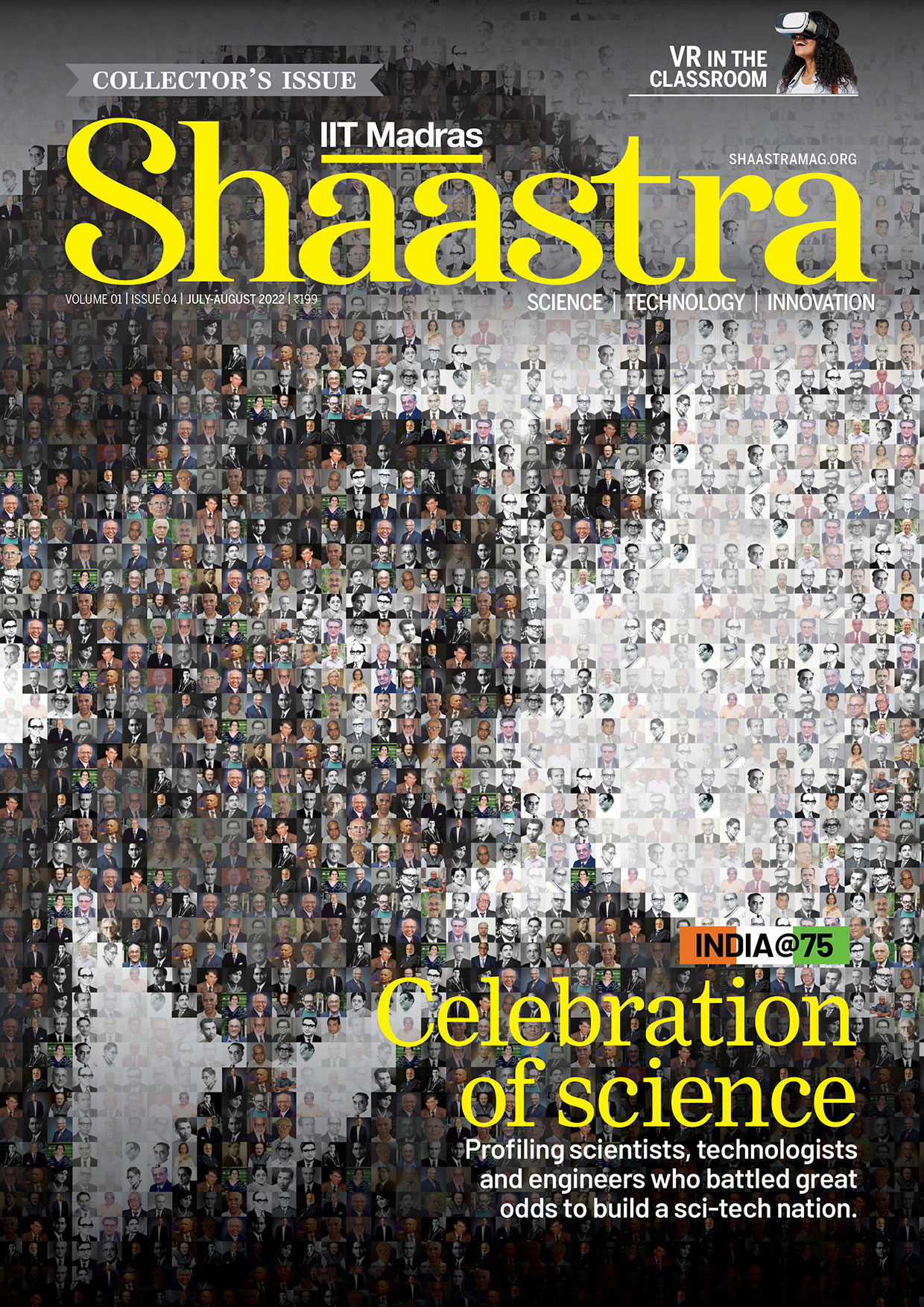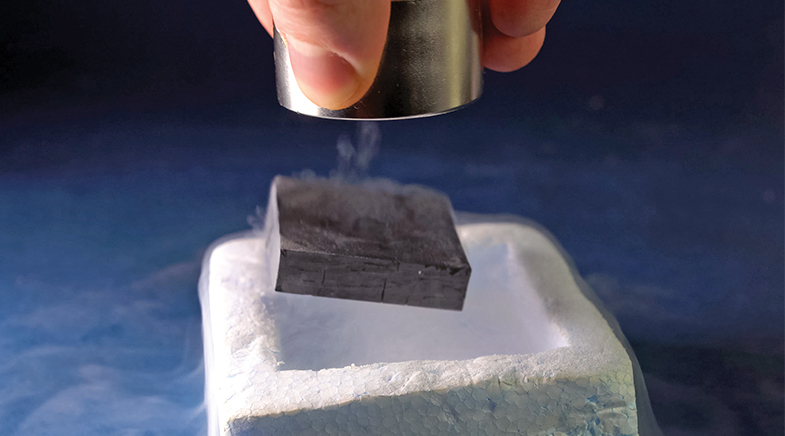A sound finding
-
- from Shaastra :: vol 04 issue 08 :: Sep 2025

Working during the COVID years on the theory of how a quantum particle interacts with noise yields surprises for RRI researchers.
What began as a way of making the best of a lockdown situation turned out to be the road to a breakthrough discovery, as senior scientists describe it, for Urbasi Sinha's group at the Raman Research Institute (RRI) in Bengaluru.
In 2018, RRI entered an agreement with the University of Trento in Italy to develop quantum technologies. The idea was not just to collaborate but to exchange scientists and expertise between the two institutions: RRI had developed original quantum protocols, and Trento was (and still is) a leader in photonic chip research. A merging of the two systems of knowledge could only favour development of quantum technology. But barely had one visit taken place when COVID-19 unfolded; the ensuing lockdowns hampered all these plans.
Urbasi Sinha had been carrying out research on the theoretical aspects of quantum entanglement, quantum decoherence and quantum noise. When two or more quantum mechanical particles, such as protons or ions or photons – particles of light – are intertwined in a combined quantum state, such that measurement of a property of one is complementary to a measurement of the same quantity on the other, they are said to be entangled. Such entanglement interacts with the environment and can "decohere" in an interval of time. This means the quantum state ceases and the entanglement is lost. The "environment" in question is modelled mathematically by different types of noise.
In 2020, during the lockdowns, Sinha entered into a collaboration with Prasanta Panigrahi, former Director of the Indian Institute of Science Education and Research Kolkata, and others at Bose Institute and the Indian Statistical Institute, Kolkata. As Co-Principal Investigators, the two investigated aspects of intra-particle entanglement, or entanglement between different dynamical variables describing a single particle. This could be, for instance, the position co-ordinate and the spin of a photon.
The study of such entanglement within a particle or intra-particle entanglement goes back to 1984, to the PhD thesis of theoretical physicist Dipankar Home. Home and his adviser in (then) Presidency College, Kolkata, were the first to study this phenomenon theoretically. At the time, it was curiosity that drove their probing into the puzzling foundations of quantum mechanics. They first proposed an experimental test that was not feasible; in the late 1990s, they came up with a proposal that was experimentally testable. "It caught the attention of two important experimental groups, both in Vienna. That was lucky," Home says. At the time, the technology to carry out this experiment was not available; but it was demonstrated experimentally years later. "It is always pleasant for theorists, if not a surprise, to have it demonstrated," says Home. He admits that it was hard to impress upon people how fundamentally important these experiments were. "It's a time-consuming process. The history of science is replete with such examples," he says. Home is positive that applications of intra-particle entanglement are being studied and will be studied more.
The combination of entanglement and decoherence has been studied by few people, especially in the context of single-particle dynamics. In 2020, the group started to study the effect of noise on intra-particle entanglement. It took them a few years to get it sorted out. "It seemed at the time a particularly weird miss or gap in the literature. But later we realised that perhaps it is because it is not particularly straightforward," says Sinha.
She admits that the main findings were counterintuitive. Firstly, in a certain kind of damping channel, known as the amplitude damping channel, intra-particle entanglement is more robust compared to inter-particle entanglement. Another stunning discovery was that when this type of noise was applied, initially the intra-particle entanglement decayed, but when they continued to apply the noise, it revived. "This never happens so naturally in an inter-particle scenario," she says.
The third counterintuitive aspect of the intra-particle case is that if you start with an unentangled state, on applying amplitude damping type of noise, you can have creation of entanglement. This is striking because, in all practical applications in the real world, the environment is noisy.
"People have tried all kinds of proof-of-concept applications using intra-particle entanglement," says Sinha. These applications include quantum communication and quantum computation. "Now our work informs how much of noise can be tolerated."
"What they have found is remarkable, and like a breakthrough," says Home. "Any application has to be robust with respect to environmental disturbance." He is also intrigued by the foundational aspects such as the revival of entanglement that the group sees.
See also:
Quantum entanglement detected in quarks
PAST ISSUES - Free to Read


Have a
story idea?
Tell us.
Do you have a recent research paper or an idea for a science/technology-themed article that you'd like to tell us about?
GET IN TOUCH














